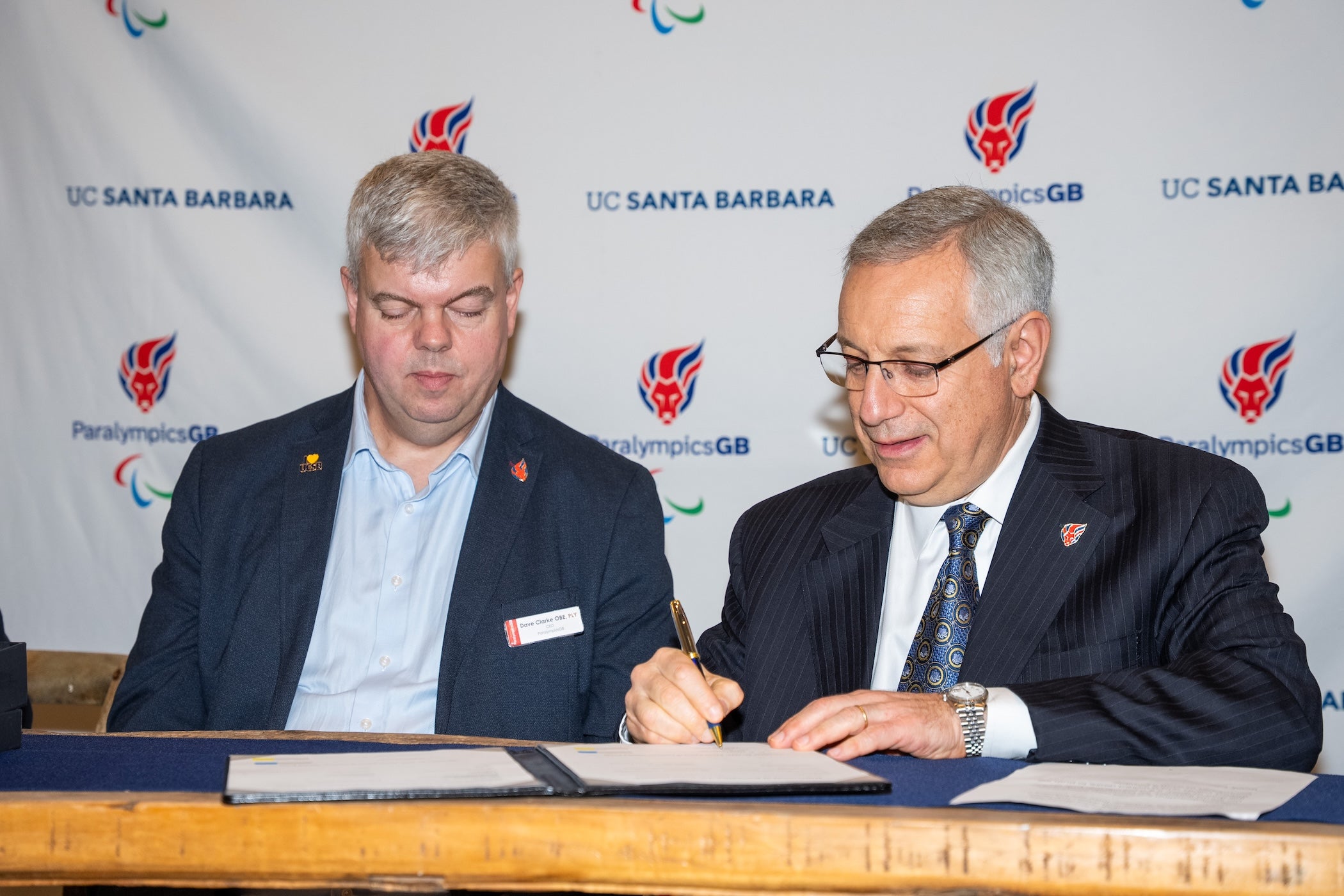
National Science Foundation (NSF) Director Sethuraman Panchanathan paid a visit to UC Santa Barbara last week, touring facilities, talking to researchers and sharing a vision for the future of science and science education in the United States.
“What are those things that we need to emphasize and build as we are thinking about the next decade,” he said, “and maybe even a few decades into the future?” Speaking to an audience at the Engineering Sciences Building after a morning spent seeing NSF-supported research in progress, Panchanathan outlined the role of the 73-year-old organization in the progress and accomplishments of science in the country. Established in 1950 by the United States Congress, the independent federal agency achieves its goals of promoting the progress of science, advancing national health, prosperity and welfare and securing national defense primarily by funding research.
UC Santa Barbara is among the many institutions that receive NSF support — NSF-sponsored grants constitute 42% of UCSB’s direct federal funding. Longstanding projects, such as the Santa Barbara Coastal (SBC) and the Moorea Coral Reef (MCR) Long-Term Ecological Research sites are funded by the NSF. Initiatives of the past few years, such as the BioPACIFIC Materials Innovation Platform and the AI Institute for Agent-based Cyber Threat Intelligence and Operation (ACTION), are also ambitious projects based at UCSB and supported by the NSF. The agency’s early career awards, meanwhile, fund promising scientists at the first stages of their research careers.
The country is at a defining moment, Panchanathan said in his lecture, titled “Innovation Anywhere, Opportunities Everywhere.”
“We have never seen global competition like we are seeing now in science, technology and innovation areas,” he said, describing this competition as a chance to leap forward.
The second characteristic of this moment is the “missing millions” — the trove of young, undiscovered talent who may not have the access to the training and the scientific career opportunities that their more fortunate peers have had. Panchanathan emphasized inclusivity and accessibility. “We have a responsibility to ensure that we are not measuring ourselves by who we exclude, but instead by who we include and how they succeed,” he added.
The third piece, he said, is bipartisan support for the advancement of science, technology, engineering and innovation.
To accomplish this leap forward, Panchanathan said, will require a partnership mindset to taking great ideas and translating them into innovation and discovery. Instead of a top-down approach, dictating research directions to which scientists and engineers across the country would bend their work, he expressed an interest in hearing the best ideas, upon which innovation could be cultivated. To this end, he said, NSF has taken the approach of “not having silos” — creating opportunities for interdisciplinary collaborations that could solve “grand challenge” problems, such as the need for resilience in the face of global issues such as pandemics, or climate change.
Fortunately, UCSB’s climate of interdisciplinary collaborations has already given it momentum in that direction.
“UCSB is punching way above its weight,” he said. “What I mean by that is for the size of the institution you are, you are outperforming because of your sheer excellence, your will, your strategy. And what I want you to do is imagine this to be 10 times more. That’s what the nation needs of you. And NSF is ready to partner with you on that journey.”
Sonia Fernandez
Senior Science Writer
(805) 893-4765
sonia.fernandez@ucsb.edu



